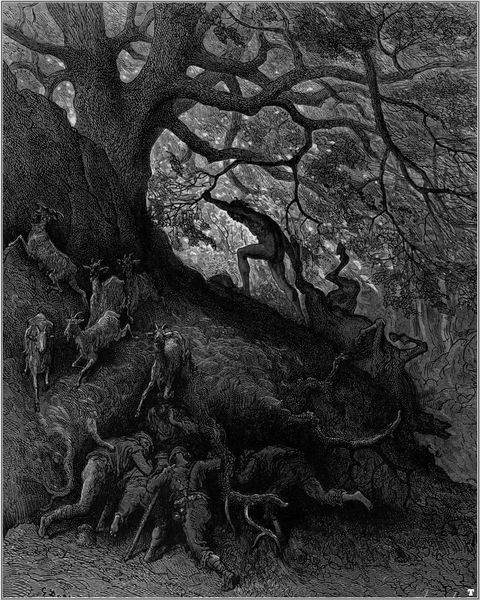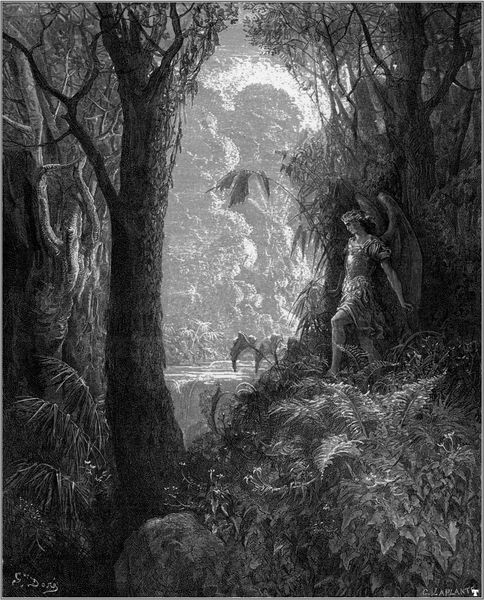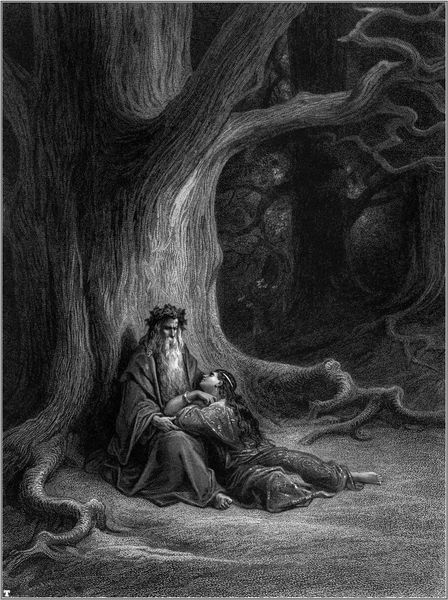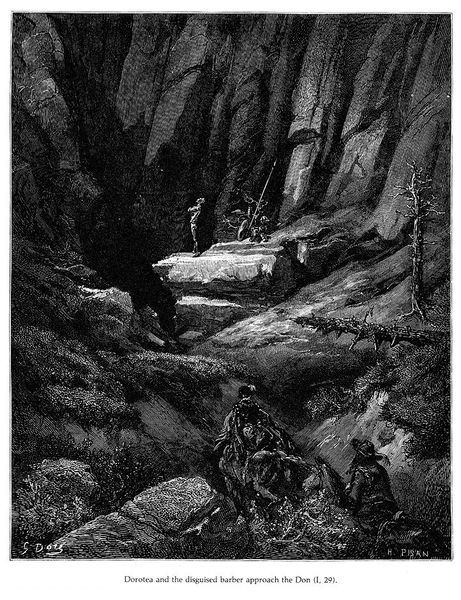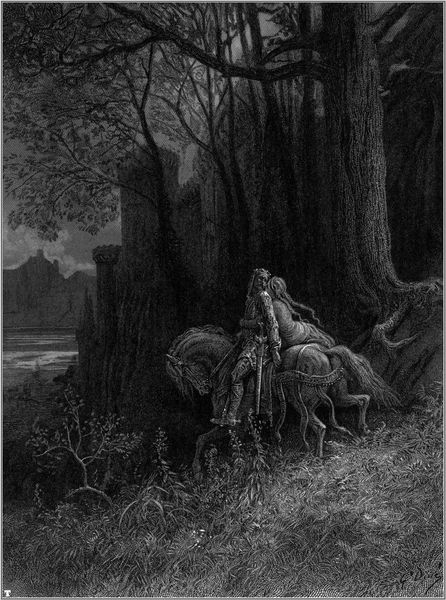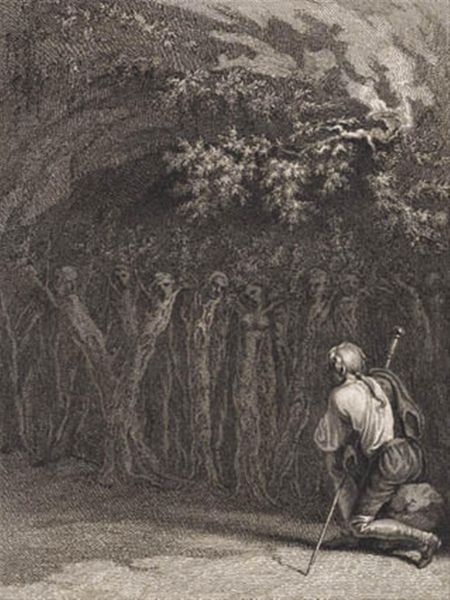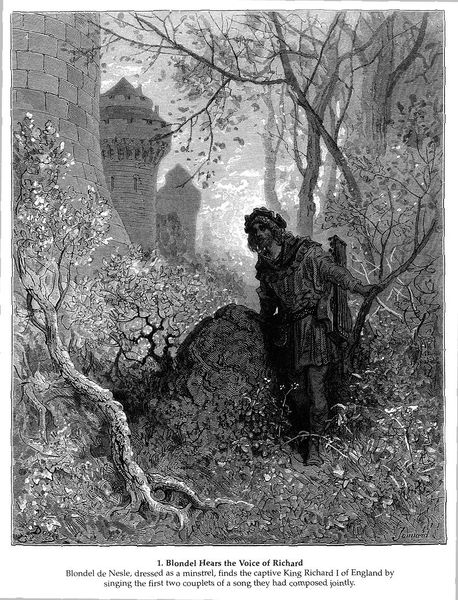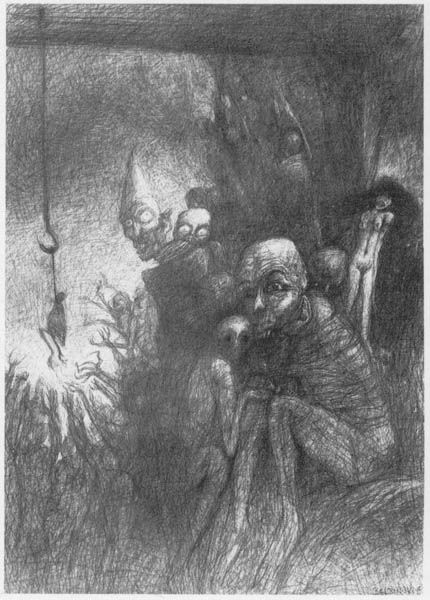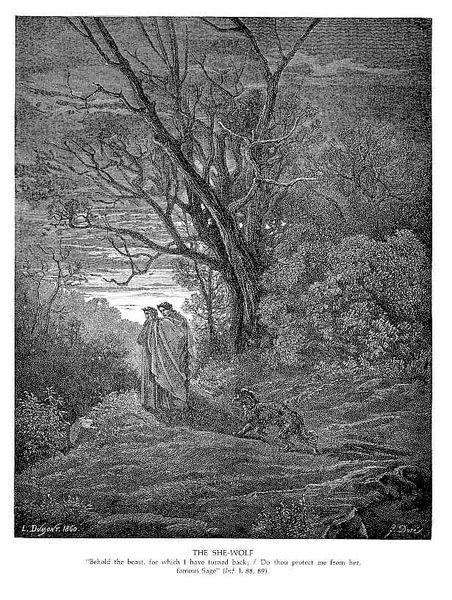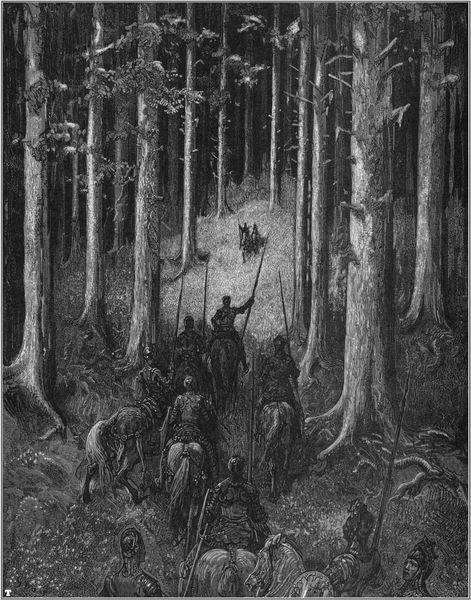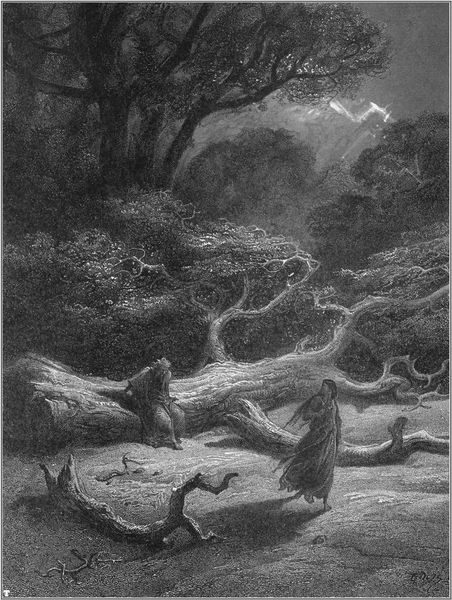
drawing, print, photography, engraving
#
drawing
#
narrative-art
#
black and white photography
# print
#
landscape
#
photography
#
black and white
#
engraving
Copyright: Public domain
Gustave Doré made this engraving, "Don Quixote," sometime in the mid-19th century. Doré lived during a time of great social upheaval in France, shaped by the rapid industrialization and the rise of the bourgeoisie. This image, with its trees laden with hanged men, viscerally evokes the themes of injustice and suffering that run through Cervantes’s novel. The stark contrast between light and shadow heightens the drama, casting Sancho Panza as a solitary figure amidst overwhelming despair. Consider how Doré’s own identity as a successful, yet perhaps socially critical, artist might have informed his interpretation. The image speaks to the universal experience of confronting harsh realities and the psychological weight of witnessing human cruelty. It reflects both the historical context of social inequality and the personal emotional responses to such injustice. This illustration ultimately challenges us to confront uncomfortable truths about power, violence, and human nature.
Comments
No comments
Be the first to comment and join the conversation on the ultimate creative platform.

